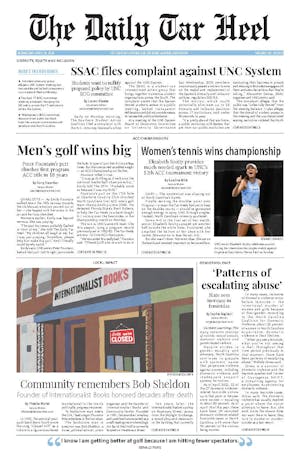All I really have to say is, welcome to being a person of color in America, literally all of the time.
This case is full of minutia and linguistic interpretations which I will leave to legal scholars to solidify as fact. The following, however, I believe to be true:
UNC places emphasis on “diversity” and operationalizes its definition in many ways, with efforts to recruit people of different socioeconomic statuses, community-college transfers, those from rural areas and first-generation students. Do many of these students happen to be people of color? Probably. But it’s not the University’s job to find a way around the sinister association between these strata and non-whiteness. So, where are the attacks on these diversity initiatives?
Knowing that our admissions office recruits along a multitude of intersectional planes, the plaintiff’s choice to attack the program focused on race is perhaps a reactionary realization of their own.
The language throughout SFFA’s complaint subtly seeks to establish and reinforce the binary that there are white students and then there are students ‘with race.’ Of course, this rests on the common misconception that to diversify just means ‘to make more brown.’ However, this is the doctrine of white supremacy — to assume that to be white is to be without race.
This case is a classic example of the tendency of white folks to racialize themselves when, and only when, their race (or perceived lack thereof) becomes a barrier to the acquisition of goods which they assumed were theirs for the taking. Race, by its working definition, was socially constructed to subjugate non-white people in this country, so if that same construction can be subverted to benefit students of color, I see that as a passive form of reparations (and the least that predominantly white institutions can do in that regard).
Affirmative action policies are meant to counter what sociologists call the "Tyranny of Structurelessness." This essentially says that institutions that lack targeted policies and established priorities tend to reflect the social hierarchy of broader society in which they operate. In the context of affirmative action, those in favor recognize that by leaving issues of inequity to resolve themselves, or being ‘colorblind,’ will only result in campuses which reflect the status quo. The likes of which we saw at universities in this country until the last quarter of the 20th century which were richer, whiter and more male.
The plaintiff’s whiteness did not account for his rejection any more than my Blackness motivated my admission. Plenty of college students are denied admission to schools that should’ve accepted them, and some get into universities that they shouldn’t have. The college admissions process is complex and universities are uniquely, inherently selective. So, most react to rejection with the quip that, “It just be like that sometimes.”



